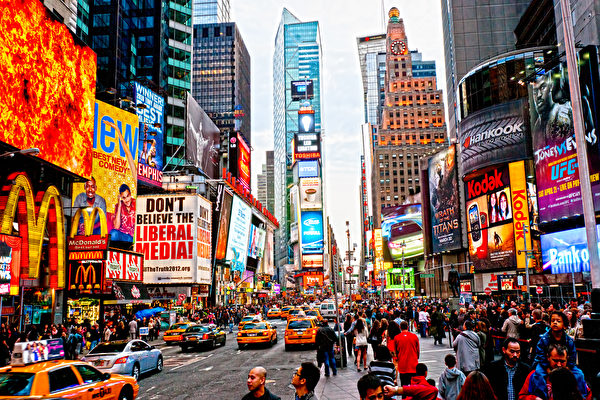In the United States, many children have already returned to school and the days are getting shorter as Labor Day long weekend (September 2 is Labor Day in the U.S. and Canada) becomes a rare opportunity for many to travel before the end of summer.
Therefore, airports, highways, beaches, and theme parks are expected to be crowded this weekend. The Transportation Security Administration (TSA) anticipates conducting security screenings for over 17 million people from Thursday through next Wednesday, setting a record for the highest number during the Labor Day holiday.
The American Automobile Association (AAA) reports that domestic travel bookings for the holiday weekend are up 9% from last year, while international travel has decreased by 4%.
According to the Associated Press, AAA spokesperson Aixa Diaz stated, “Labor Day offers people a chance to travel on the last weekend of summer. People will take advantage of the three-day weekend or take the whole week off leading up to Labor Day.”
American Airlines is preparing to welcome the largest number of passengers in history during this Labor Day weekend, expecting a 14% increase compared to last year.
As per the Associated Press compilation, here are some things to know about Labor Day travel:
According to the government’s consumer price index, the average airfare in July dropped by 7.1% compared to June and by 2.8% compared to July 2023. This trend seems to be accelerating with the end of the summer peak season.
Steve Hafner, CEO of travel search website Kayak, mentioned, “We are now entering the traditional fall with declining demand, which you can also see in airfares. Ticket prices have dropped by about 26% compared to summer and even 4% lower than last fall.”
At the same time, gasoline prices have decreased compared to last year. According to AAA data, the national average gas price is currently $3.44 per gallon, down from $3.86 a year ago.
For electric vehicle owners, the average price per kilowatt-hour at L2 commercial charging stations is around 34 cents: Kansas and Missouri have averages below 25 cents, while states like New Hampshire, Tennessee, and Kentucky have averages above 40 cents. Hawaii has the highest price at 56 cents.
If driving on Friday before Labor Day, many people are still working. Therefore, it’s best to depart before or after the morning rush hour to avoid traffic.
INRIX, a traffic data provider, indicates that Friday afternoon from 2 p.m. to 6 p.m. is the least suitable time for driving. On the return journey, Monday from 11 a.m. to 8 p.m. is predicted to have heavy traffic almost all day.
Practice safe driving. With the pace of life increasing, vehicles are speeding up on the roads. The latest data from Arity, a subsidiary of insurance giant Allstate, shows an 83% increase in drivers speeding over 80 miles per hour and over 50% increase in drivers exceeding 100 miles per hour.
Surprisingly, Arity’s data shows that distracted driving rates have decreased during the past three Labor Day weekends.
TSA data points out that Friday is the busiest day at the airports. The agency expects to screen 2.86 million people on that day. However, TSA mentioned they have enough security personnel to keep normal wait times to 30 minutes or less and PreCheck wait times within 10 minutes.
American Airlines states that Thursday and Friday will be their busiest days, with 6,400 flights per day, followed by the Labor Day itself on the next Monday (September 2) when the airline will have 6,300 scheduled flights.
Officials at Seattle-Tacoma International Airport are working on restoring full services following a recent cyber attack over the weekend. Alaska Airlines and Delta Air Lines reported that flights were not disrupted, but the baggage sorting systems were affected. Based on booking data, AAA ranks Seattle as the top destination for Labor Day holiday.
Check your itinerary before heading to the airport – it’s always better to know ahead of time if your flight might be delayed or canceled than being stuck at the airport.
If your flight is canceled, the airline might automatically rebook you. Passengers can also use the browser plugin Points Path to find better alternatives than what the airline offers.
Handling these matters through the airline’s agents at the airport may be challenging, especially if many flights are canceled. Thus, it might be quicker to rebook yourself via the airline’s website or app.
In case of flight cancelations, airlines are required to provide refunds, including any additional fees paid. However, major U.S. airlines are not obligated to offer monetary compensation. Only Alaska, Southwest Airlines, and JetBlue Airways promise travel vouchers as compensation if the cancelation was their fault.
If you need to spend the night at the airport, inquire with the airline about accommodations, meals, and ground transportation. Except for Frontier Airlines, all major U.S. carriers promise assistance with essentials in case of “controllable” disruptions, excluding weather-related flight cancelations.
Save receipts for any additional expenses incurred for future reimbursement claims.
– Depart early. Often, travel times may surpass expectations, especially with airport security checks. If parking at the airport, ensure there are available spots upon arrival – many airports now provide this information online.
– Keep an eye on the weather. Conditions may change, even if it looked clear before departure, be prepared for possible storms or unexpected weather events en route.
– Stay calm. Flight cancelations and traffic jams can be frustrating, but you’re not alone in this. While waiting for customer service representatives to assist, maintain patience and composure.

